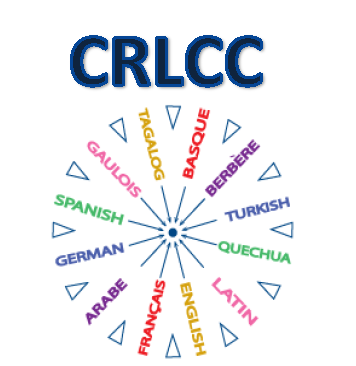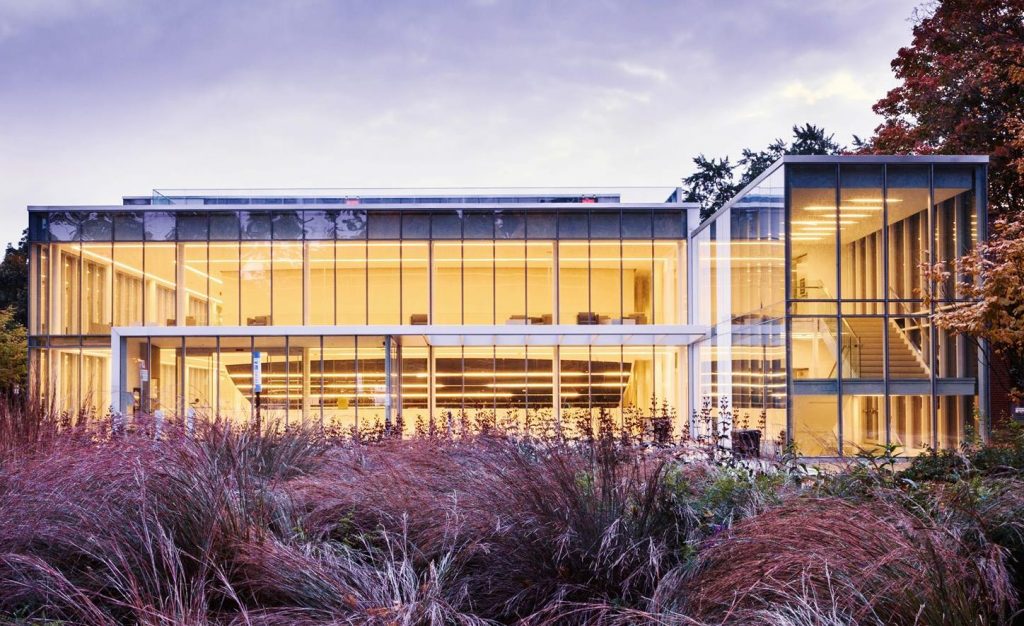
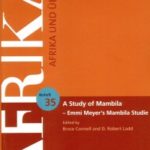
Bruce Connell et D. Robert Ladd marquent le quatre-vingtième anniversaire de la publication originale des études sur le mambila d’Emmi Meyer.
Les deux chercheurs présentent une édition de la première description détaillée du mambila (une langue de la région d’Adamawa, au Cameroun), le produit d’un éminent africaniste allemand du milieu du 20e siècle, le professeur Emmi Kähler-Meyer (30 novembre 1903 – 1er juin 1998).
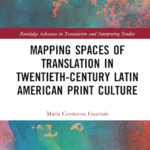
Glendon salue la professeure et chercheuse María Constanza Guzmán pour la publication de son nouveau livre Mapping Spaces of Translation in Twentieth-Century Latin American Print Culture
La professeure María Constanza Guzmán est professeure agrégée, chercheuse et traductrice qui vient de publier son livre Mapping Spaces of Translation in Twentieth-Century Latin American Print Culture avec la maison d’édition Routledge l’été dernier. Mapping Spaces est une recherche approfondie des liens entre la traduction et la culture de l’imprimé dans les années 60 et 70 en Amérique latine. Pour en lire plus.

Glendon s’attaque à la pénurie de profs de français langue seconde
Le campus bilingue Glendon de l’Université York veut remédier à la pénurie de professeurs de français langue seconde (FLS) en Ontario et au Canada en créant un «pôle de mobilisation du savoir» dans ce domaine. C’est en fait tout le secteur de l’enseignement du français – de base ou intensif – qui peine à recruter et retenir ces profs. Pour en lire plus.
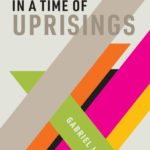
Le professeur Gabriel Levine, chercheur à Glendon, célèbre le lancement virtuel de son nouveau livre Art and Tradition in a Time of Uprisings qui tombe à point nommé.
Gabriel Levine, professeur adjoint contractuel d’études d’art dramatique à Glendon, est un artiste et un intellectuel. Son nouveau livre Art and Tradition in a Time of Uprisings explore ce qu’il appelle « expériences expérimenter avec la tradition » dans les arts visuels et les arts du spectacle. Pour en lire plus.
Ce que nous faisons
Domaines de recherche
Le CRLCC abrite plusieurs groupes de recherche couvrant un large éventail de thématiques qui contribuent au domaine du contact des langues et cultures. Les pôles de recherche actuels comprennent:
Acquisition d’une 5e ou 6e langue dans un contexte multilingue
Acquisition des langues minoritaires
Alternances codiques
Contact et brassage dialectal
Description linguistique des pidgins et créoles
Écologie du langage
Éducation bilingue/multilingue et en langue minoritaire
Acquisition et pédagogie des langues secondes
La langue et les nouvelles technologies
Langue et identité
Langue et services de santé
Les langues menacées
Linguistique contrastive
Littératures minoritaires
Maintien des langues minoritaires
Planification langagière
Traduction
Variation et changement linguistique dans les langues en contact
Pour encourager les échanges et la collaboration entre chercheurs, nous organisons régulièrement des déjeuners–causeries de 12 h 00 à 13 h 30 à Glendon (le jour et le lieu varient). Ceux qui souhaiteraient présenter un travail publié ou en cours sont invités à le faire circuler une semaine avant leur présentation. Merci de les envoyer à crlcc@glendon.yorku.ca.
Venez découvrir le travail de chacun !
Consultez la liste des présentations ici
Pour réserver une date de présentation, veuillez nous écrire au crlcc@glendon.yorku.ca.
Avez-vous manqué une de nos présentations ? Vous pouvez les regarder en différé ici:
Le saviez-vous ?…
Chaque semaine, des membres du CRLCC se proposent de tester vos connaissances tout en vous faisant découvrir divers aspects de leurs recherches. Vous aussi, envoyez-nous vos « colles » accompagnées d’un lien !
David Bowie – musical chameleon
You may know that David Bowie recorded very popular French and German versions of « Heroes » (about lovers by the Berlin Wall). Indeed, maybe you haven’t been able to get the lyrics « on pourra être héros pour jusqu’à jamais » or « Werden wir Helden für einen Tag » out of your head. You may also know that Bowie inserted Japanese phrases into It’s No Game (Part 1) » and that he used a completely self-invented language on the 1977 Low album track, Subterraneans.
But did you know about Bowie’s affiliations with internationally renowned fashion? Would you know which of the following designers Bowie never worked with?
- a) Alexander McQueen
- b) Kansei Yamamoto
- c) Karl Lagerfeld
- d) Thierry Mugler
- e) Stella McCartney
(answer below)
You can find the Bowie lyrics online at: http://www.songlyrics.com/david-bowie/-heroes-french-lyrics/ and https://lyrics.fandom.com/wiki/David_Bowie:%22Heroes%22/%22Helden%22.
For more about Bowie’s songs in translation, see Susan Ingram’s « Translating Affect: David Bowie’s Lazarus in German” in the Delos: A Journal of Translation and World Literature special issue on Performance and Translation (doi: 10.5744/delos.2020.1006), while those interested in fashion can check out her « Constellating Stardom, Berlin-Style: Bowie, Christiane F, Hedi Slimane » (doi: 10.1080/19392397.2018.1559048) and « Where the Boys Who Keep Swinging Are Now: Locational Relationality in Hedi Slimane and Helmut Lang » (http://imaginations.glendon.yorku.ca/?p=10918).
From Bruce Connell, Professor, Linguistics & Language Studies (LIN), Glendon College:
Language ecology and endangered languages in Africa The most commonly cited cause of language endangerment globally is the (increasing) dominance of a colonial or imperial language: witness, for example, the demise of languages indigenous to the Americas and Australia. The situation in Africa is often claimed to be different, that the threat here is more from national languages or regional lingua francas that are themselves African languages, rather than from colonial languages […]. However, some languages are disappearing due to the effects of not a single factor, but a combination of several, which can best be described as changes to their ecology.
An endangered language of the Nigeria-Cameroon borderland in Africa was only ever spoken by blacksmiths and their families. Do you know which one?
a) Mambila
b) Ibibio
c) Somyev/Sombe
d) Bamileke
e) Kapsiki/Higi
(answer at the bottom of the page)
To learn more about language ecology and this endangered African language, follow this link:
answer: c
From Susan Ingram, Professor, Dept of Humanities (Keele campus) and Graduate Studies Program in Translation, York University
Vienna’s culture of appearance
Modernity means something quite different, something much more inflected and influenced by the weight of the historical, especially the baroque, in the Viennese context than it does in other modern Euro-American cities, such as London, Paris, Berlin, New York, Chicago and Los Angeles.
This is why, according to its most popular advertising campaign, Vienna prides itself on being…
- a)schön
- b)einmalig
- c)anders
- d)wunderbar
(answer at the bottom of this page)
Your German is not good enough? You would like to know more?
More information can be found in the introduction to Wiener Chic, available as an ebook in the York
answer: c (anders = other, strange, different, quirky)
From Elaine Gold:
Executive Director
Canadian Language Museum
Did you know…?
As in French, the nouns in Algonquian languages are divided into two grammatical ‘genders’ that affect the forms of accompanying determiners and verbs. However, unlike French, these categories are animate and inanimate. All people are in the animate category, and so there are no issues around gender-neutral language!
You may be surprised to learn that only one of the following nouns belongs to the inanimate category. Do you know which one?
- Dewehgan (drum)
- Mtig (tree)
- Kidwin (word)
- Semaa (tobacco)(answer at bottom of page)To learn more, visit the Canadian Language Museum’s Cree exhibit page www.languagemuseum.ca/exhibit/cree-peoples-language or consult our new booklet ‘Indigenous Languages in Canada’ www.languagemuseum.ca/indigenous-languages-in-Canada.
The French exhibit page and booklet can be found at: www.museedeslangues.ca/exhibit/le-cri-la-langue-du-peuple and www.museedeslangues.ca/les-langues-autochtones-au-Canada.
Answer : c



